You already know to take your gun off when you go swimming, but how much moisture is too much? Is there such a thing as too much dryness for your firearm? Preventing corrosion on the one hand and cracked handles on the other will go a long way toward keeping your trusty firearm in good shape.
Aim for 50% humidity (30% to 60%) when storing your gun to keep a balance between too much corrosive moisture on the metal parts and too much cracking dryness for the wood parts. Use a holster that repels moisture rather than absorbing it, and wipe the gun off before storing it each night.
Use a hygrometer in your gun safe and regulate the humidity with a dehumidifier bar or silica packs if your safe is airtight or if you live in a humid environment.
The NRA Museum, which specializes in storing and displaying collectible firearms, suggests aiming for 50% humidity. Too much humidity corrodes the metal parts and too little can dry out the wooden stock.
I went looking for standards on moisture and guns and did not find a law or agency that sets moisture standards. When I looked up “moisture” and “humidity” at atf.gov, the website for the Bureau of Alcohol, Tobacco, Firearms and Explosives, I got articles about explosives and fingerprints.
I branched out and went to the CDC to see what the humidity standards are for humans. The EPA recommends keeping humidity in homes between 30% and 60% to inhibit mold growth.
According to the National Weather Service, humidity is relative to air temperature. Warm air can hold more moisture than cool air, which is why hot weather can feel sticky and cold days make you feel dry. The dew point is the temperature at which condensation forms on surfaces and varies according to temperature. A comfortable dew point temperature in the Ohio Valley in the spring might be in the 50s (Fahrenheit).
When the temperature is at the dew point, the air is saturated with moisture. The dew point temperature measures the amount of water vapor in the air. You don’t want the temperature in your home to be at the dew point because condensation will form on your gun.
National Geographic reports that deserts can be all the way down to 0% humidity, and at that point there is not enough moisture in the air for clouds to form. Temperature extremes in the desert relate to the lack of clouds and can quickly swing between freezing at night (32 degrees) and brutally hot in the daytime (100 degrees) in the Chihuahua Desert.
Your mental image of the desert likely includes cactus plants, dry sand, and parched, whitened bones of animals baking in the sun. That’s not good for your gun either.
The Effects of Too Much Humidity on Your Gun
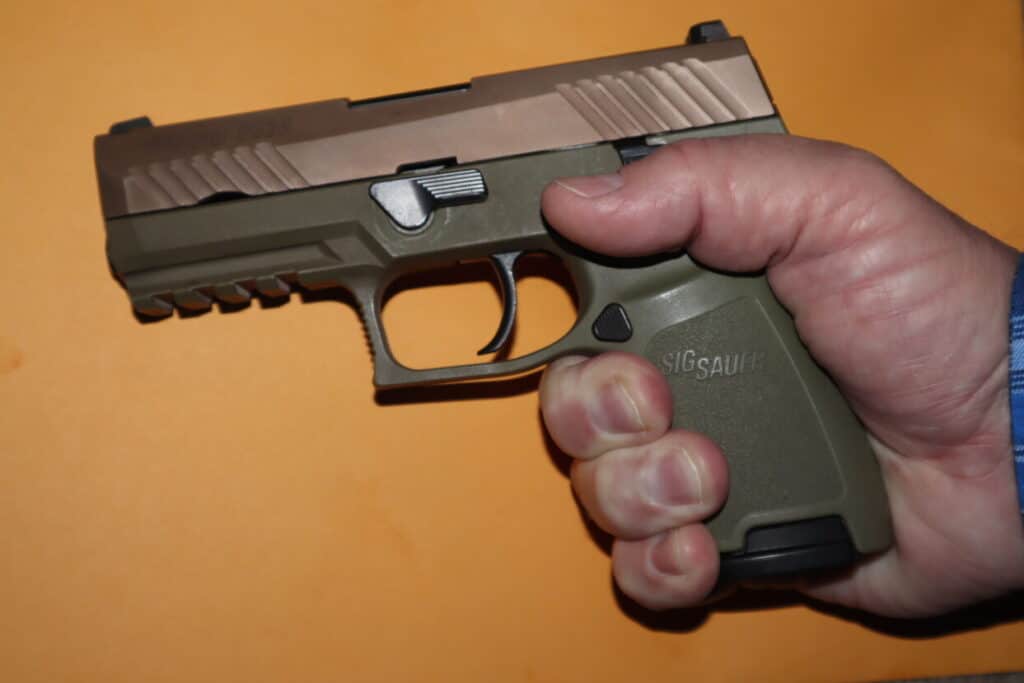
The human body is around 98 degrees Fahrenheit and is covered in skin-protecting oils. You handle the gun when you put it in your holster and then you carry it close to your side all day if you are carrying concealed. The weather outside can be hot or cold, moist or dry. Then you put it in your air conditioned house next to your bed or in an airtight safe where no air movement is there to encourage evaporation.
The result is that condensation and traces of body oils and salts can corrode the metal or take the shine off the coating of your gun. Eventually rust can get into the working parts and keep the gun from firing properly. The beautiful shine of the new metal or polymer gradually becomes dull and spotted, and your trusty firearm becomes your rusty firearm.
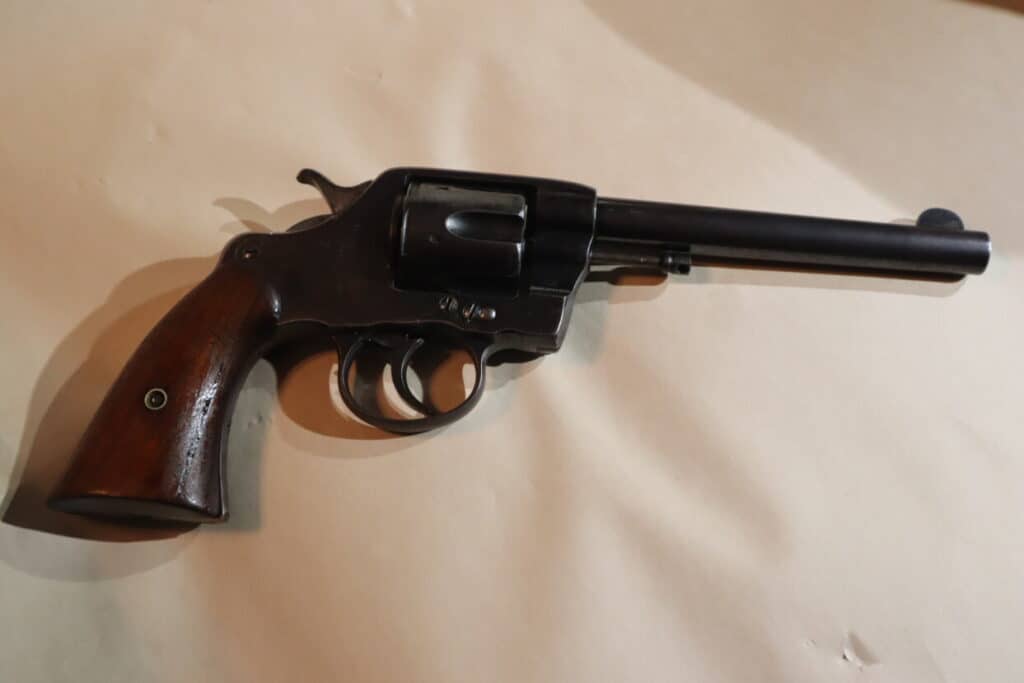
The Effects of Too Little Humidity on Your Gun
On the other end of the spectrum is a dry environment like an unheated shed or the inside of your car, where the sun beats down on the upholstery and fades it. The wooden parts of your gun can shrink in the presence of extreme heat and dryness, causing cracks and loose joints. Going in and out of different levels of temperature and humidity will keep the wood expanding and contracting, gradually damaging the cells of the wood.
Activities Which Increase and Decrease Humidity for Your Gun
The ideal situation is to keep the temperature and humidity stable, but unless you are running a museum you are not likely to accomplish that goal. Going in and out of air conditioned buildings causes the humidity to go up and down, causing your gun to sweat with the changes just as you do.
Increased physical activity on your part exposes your gun to increased temperature and humidity from your body. Rainy or foggy days will increase the moisture next to your gun, and clear, hot days will decrease the moisture. Working in a kitchen or bathroom, riding a horse, or going out on a boat will affect the humidity level for your gun.
Climates Where Humidity is a Bigger Consideration for a Gun Owner
Mild temperatures and low relative humidity are as refreshing for your gun as they are for you. Rainy environments like the American Northwest take a toll on your guns, as do the deserts of the American West.
Climates with constant changes, like the tornado-prone American Plains, will keep your gun’s metal and wood expanding and contracting with the changes in temperature and humidity.
Salt water from oceanfront areas can also be corrosive, as you will note if you take a vacation and note how rusty cars are near the ocean. Hurricanes bring pressure changes that quickly vary the temperature and humidity of the environment.
How Your Gun’s Finish Responds to Humidity
Gun are made of metal or polymer (plastic). Metal guns can be finished with a protective coating. Common coatings include stainless steel, Nitron, and Cerakoting. Other finishes abound, so research the coating on your particular model for more specific detail. Protective coatings delay corrosion but do not prevent it entirely.
Polymer Guns and Humidity

The frames and grip modules of some guns are made of polymer, which will resist corrosion because water does not affect plastic. No gun is made completely of polymer, so you still need to pay attention to the moisture level that affects your mostly polymer firearms.
Nitron Coatings and Humidity
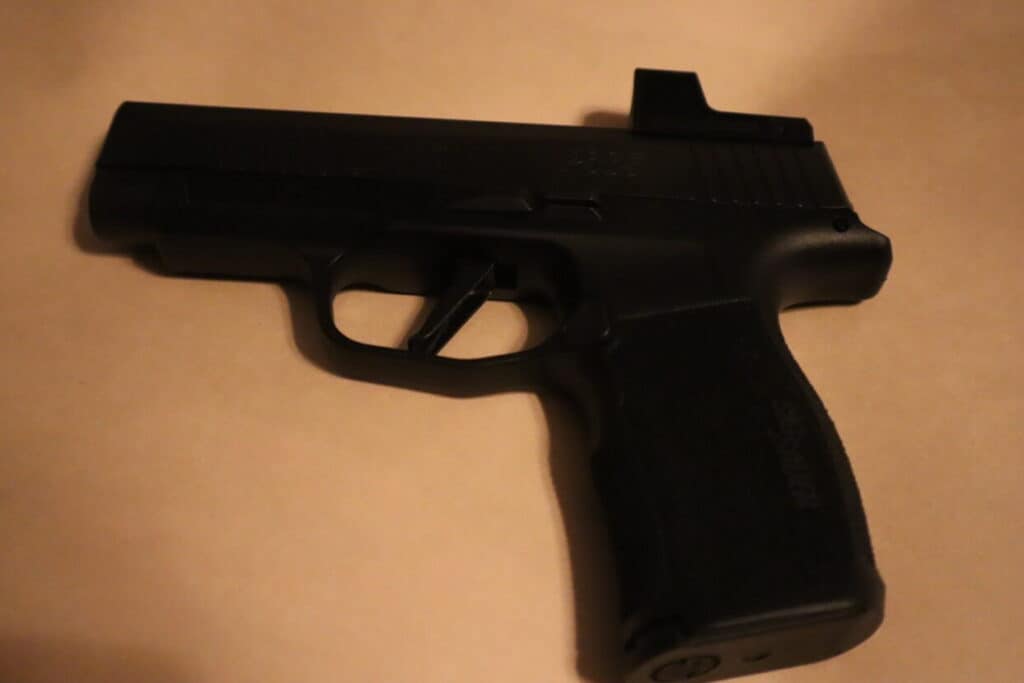
Nitron is a protective coating with a satin finish. It does well with moisture control but can be scratched, allowing the metal to show. There are few coatings that will not wear off or scratch.
Cerakoting and Humidity
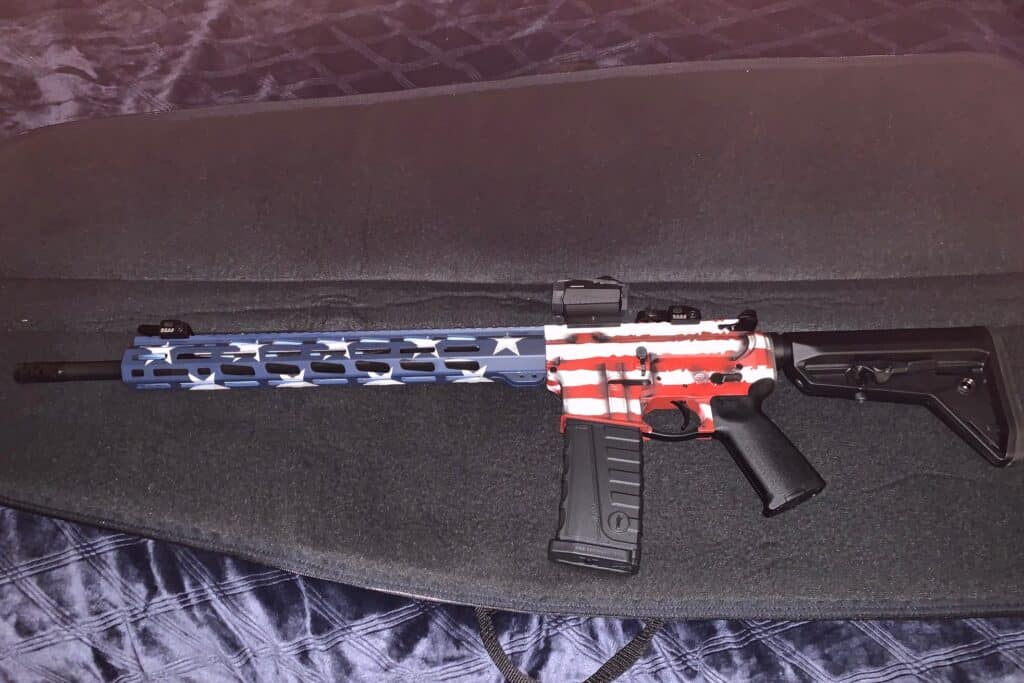
Cerakoting gives a smooth finish to your gun and comes in lots of colors. It protects the metal underneath by adhering to it and repelling moisture. Watch for wear because the coatings can chip.
Stainless Steel Guns and Humidity
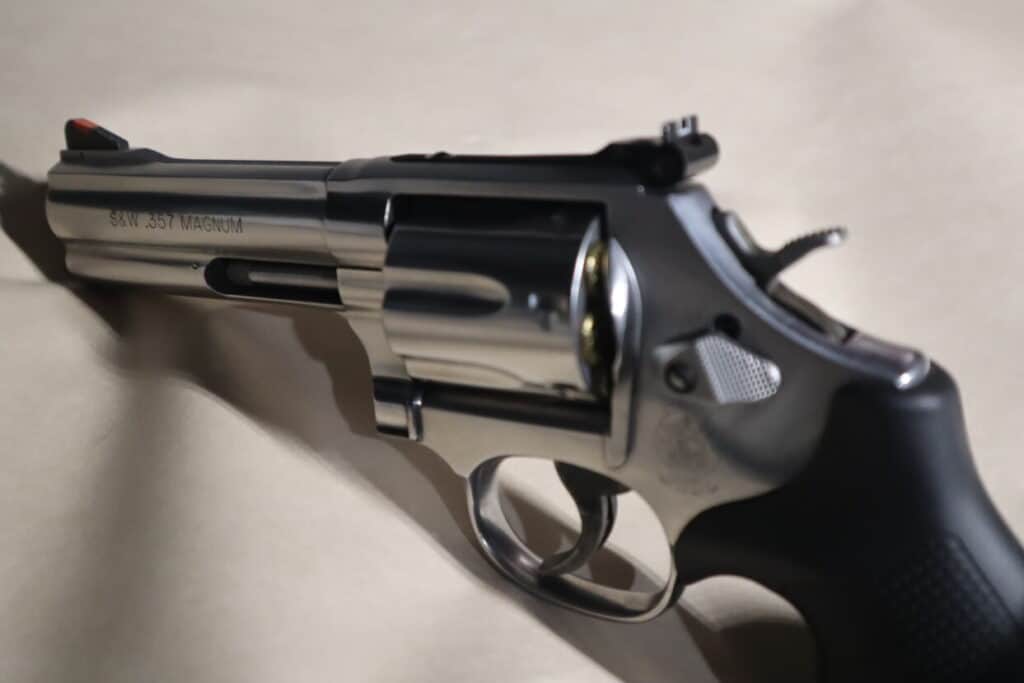
Stainless steel will oxidize at a slower rate than other metals as long as it is not exposed to chemicals. Salt in particular is corrosive for stainless steel, which is a good reason to wipe down your gun after handling it.
Blued Finish and Humidity
Blueing is a chemical process that treats the steel and helps it resist corrosion. It was used earlier than other coatings. Blueing can wear off and can be scratched, so inspect your gun’s coating for integrity.
How to Measure Humidity in Your Gun Storage
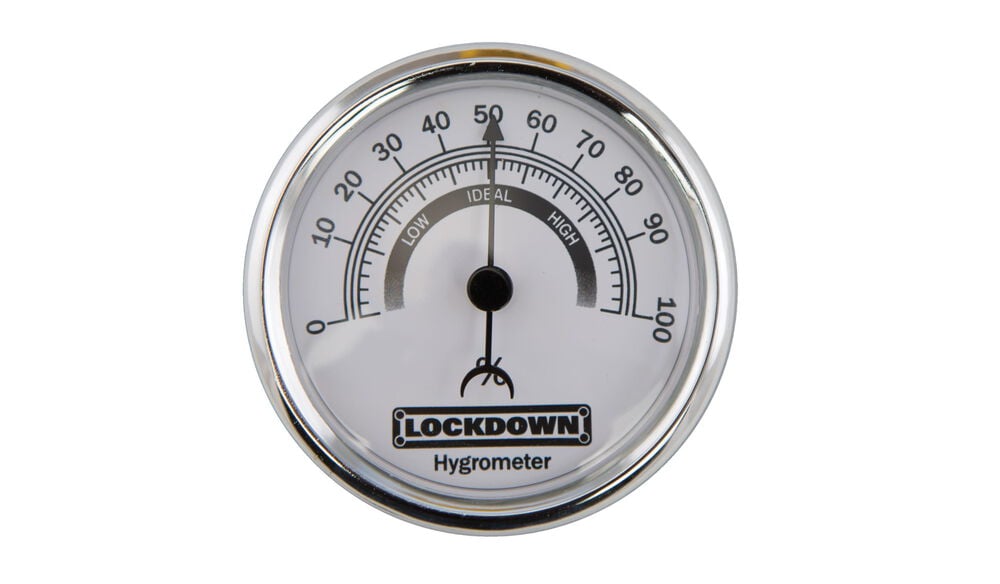
A hygrometer is a handy device that measures the moisture level in your safe or other storage area. It is easy to find a model that also measures temperature. Lockdown makes a Puck that monitors temperature, humidity, and movement, so it functions as an alarm for your gun storage area.
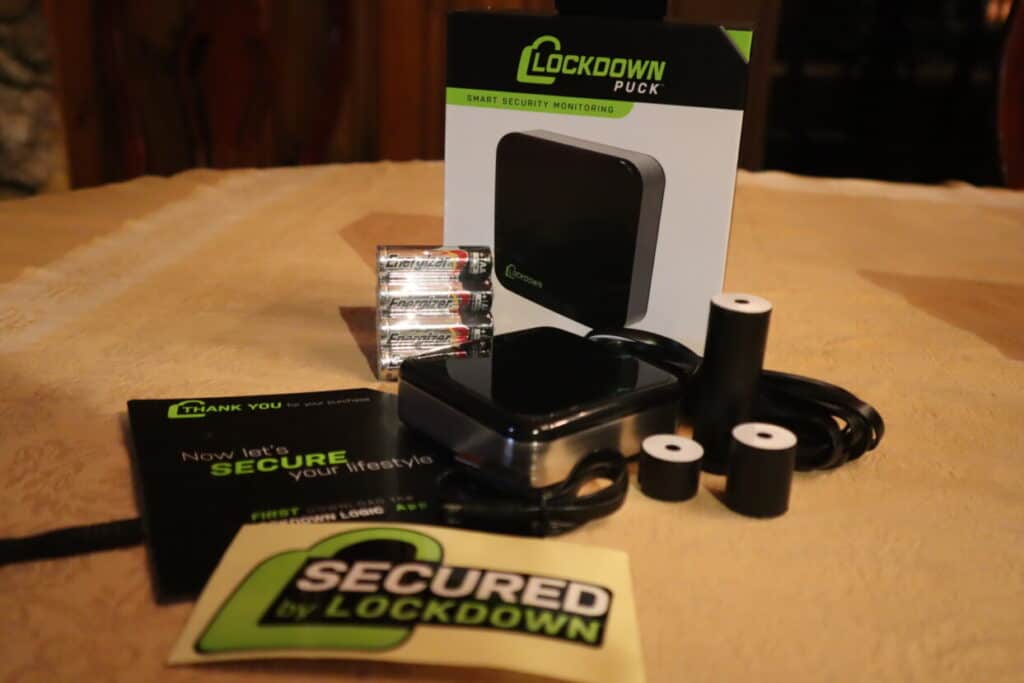
How to Decrease Humidity in Your Gun Storage
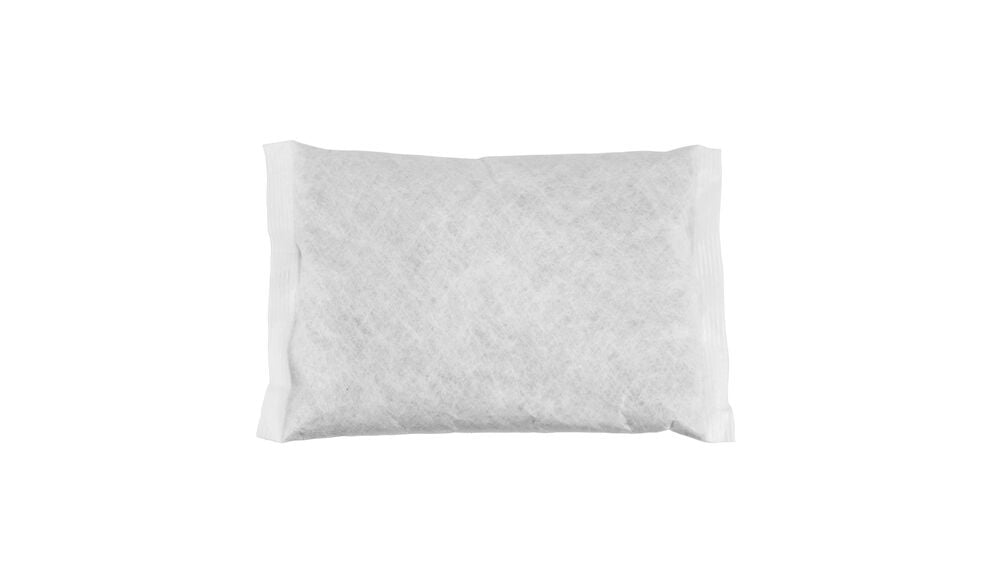
You can spend a little or a lot on humidity control. For a small space with just a few guns, a bowl of rice will serve as an index of the moisture in your environment and an absorber of that moisture. Spend just a little on desiccant packets to get the absorption without worrying about spilling little rice grains all over your safe.

For a larger safe with an electric outlet, choose a dehumidifier rod. This space-saving device sits unobtrusively on the floor of your safe, making no noise and giving no light as it removes the moisture from the air.
.jpg?sw=510&sh=510)
If your safe is bigger than your closet, consider a bigger dehumidifier that also circulates the air. This device takes up more room, but you’ve invested a lot in your gun collection and you don’t want to risk corroding your guns.
Daily Gun Maintenance for Humidity
Whether you put your gun in the safe each night or stage it for home defense, take the time to wipe it with a soft dry cloth. Removing the skin oils and accrued moisture will go a long way toward preventing corrosion.
How Your Holster Keeps your Gun Moist or Dry
Kydex
Kydex is a hard plastic that will not absorb moisture. This will keep your gun dry, but moisture could accumulate on the outside of the holster.
Nylon
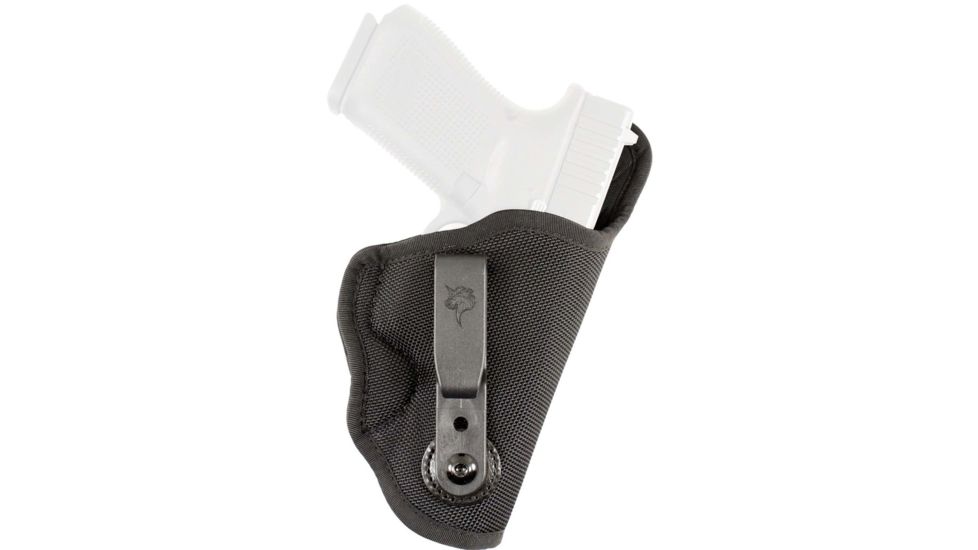
Nylon and similar fabrics absorb moisture, so use them when you are not going to be active and sweaty on a hot day.
Leather
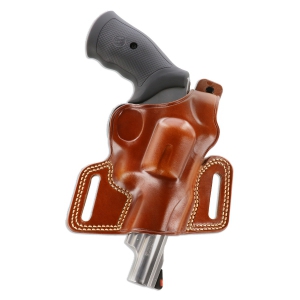
Leather holsters absorb moisture and some of the moisture will be on the gun itself. Keep a layer of fabric between the gun and your skin to minimize the moisture you add to the situation.
Don’t Overdo Gun Cleaning and Dehumidification
Where guns are concerned, a little bit of maintenance goes a long way. Don’t clean your guns too often or you can rub off the finish. In the same way, you can make your environment too arid and suck the moisture out of that beautiful antique mother-of-pearl or wooden grip that makes your firearm a showpiece as well as a part of your defensive plans.
Keep your house comfortable and your safe dry. Wipe down your gun after handling it. And don’t sweat the details too much. You’ve got this.
Thanks for reading my blog. Be sure to check out our Double Eagle Gunworks YouTube channel for more helpful information on guns.



